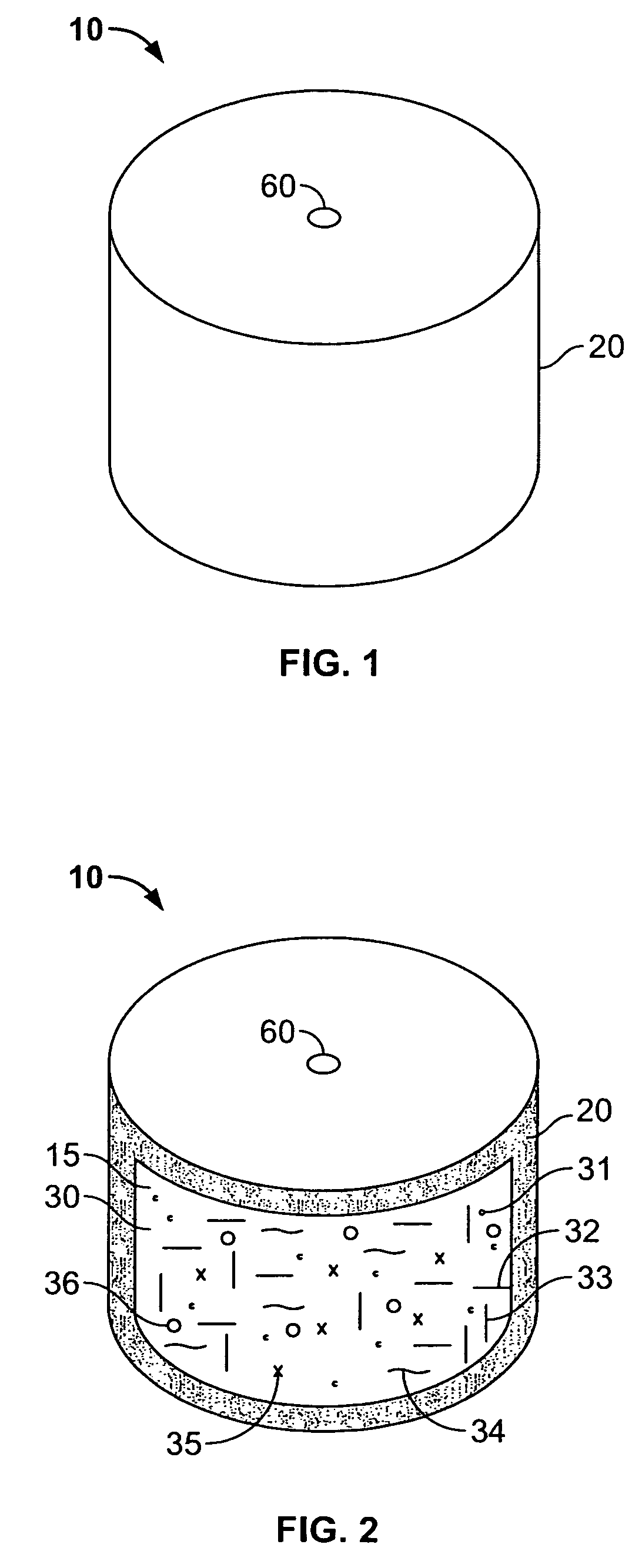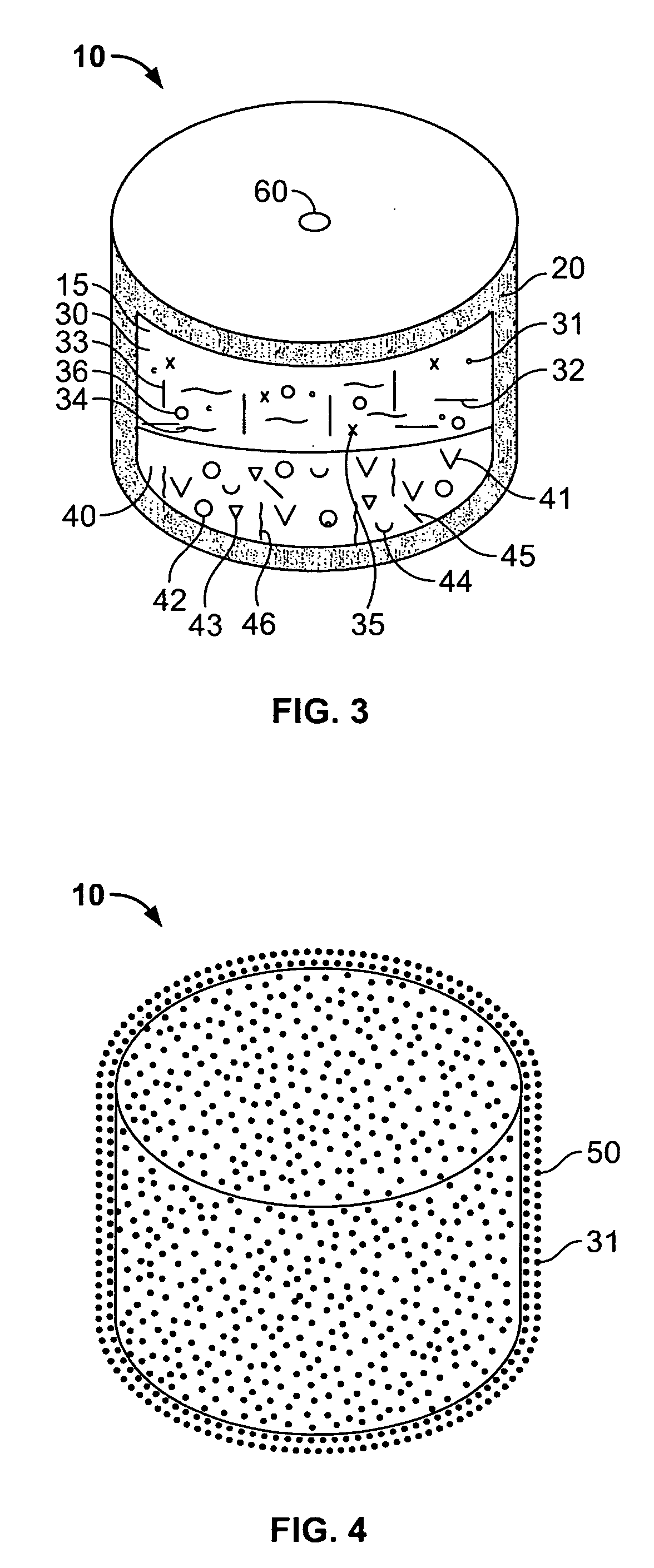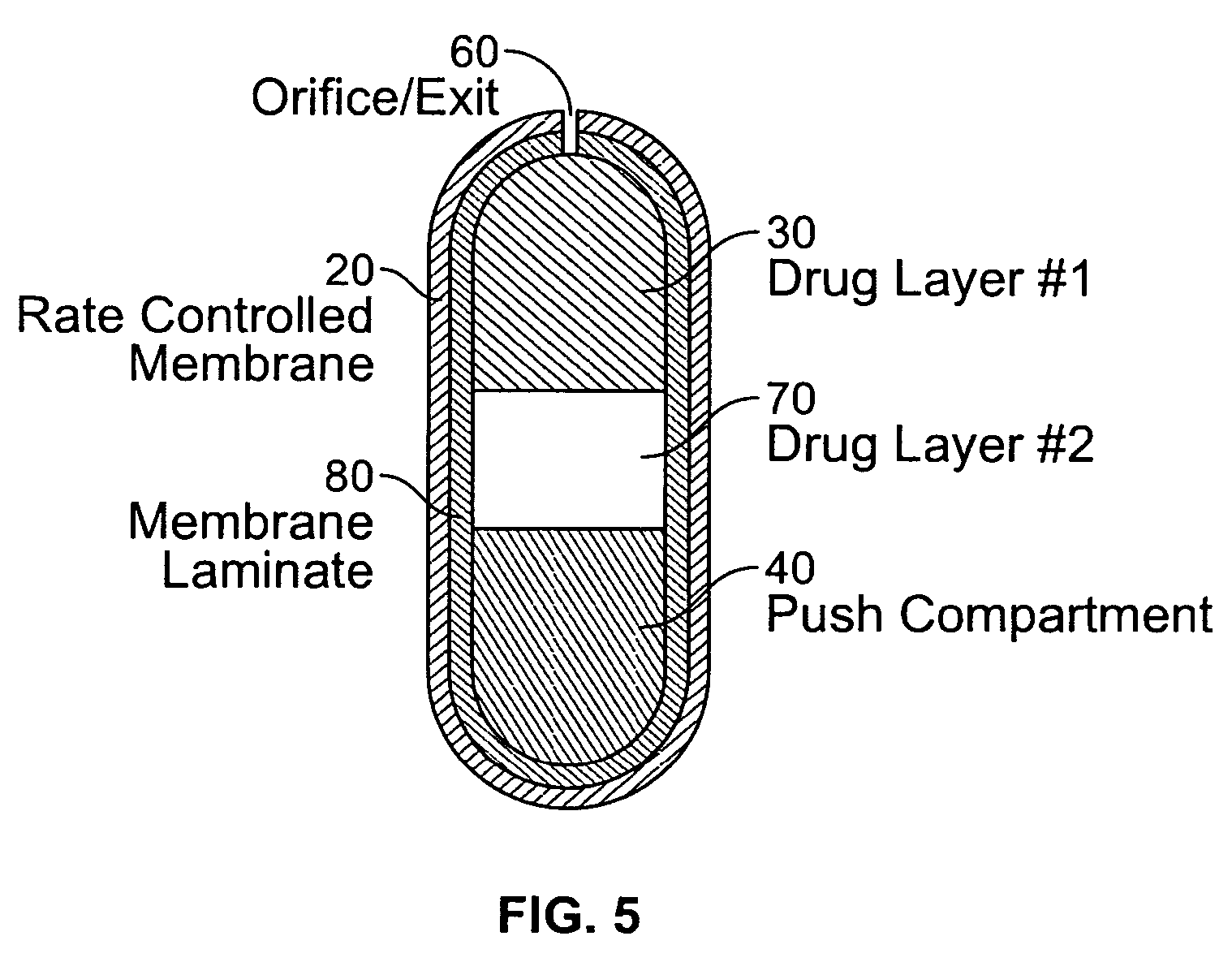Dosage forms for low solubility and or low dissolution rate free acid pharmaceutical agents
a free acid pharmaceutical agent and low solubility technology, applied in the field of dosage forms, can solve the problems of large size that patients are unwilling or unable to swallow, free acid pharmaceutical agents may not lend themselves to controlled or sustained therapy, and surfactants are well known to have poor cohesive properties, etc., to achieve low solubility, low dissolution rate, and low solubility
- Summary
- Abstract
- Description
- Claims
- Application Information
AI Technical Summary
Benefits of technology
Problems solved by technology
Method used
Image
Examples
example 1
Zero Order Release Rate Osmotic Dosage Form of Topiramate
[0195] A dosage form adapted, designed and shaped as an osmotic drug delivery device was manufactured as follows: 5 g of topiramate, 11.5 g of topiramate monosodium trihydrate, 29.5 g of polyethylene oxide with average molecular weight of 200,000 and 2.5 g of polyvinylpyrrolidone identified as K29-32 having an average molecular weight of 40,000 (Povidone K29-32) was added to a glass jar. Next, the dry materials were mixed for approximately 30 seconds. Then, approximately 20 ml of denatured anhydrous alcohol was slowly added to the blended materials with continuous mixing for approximately 2 minutes. Next, the freshly prepared wet granulation was allowed to dry at room temperature for approximately 18 hours, and passed through a 16-mesh screen. Next, the granulation was transferred to an appropriate container and lubricated with 1 g of stearic acid and 0.5 g of magnesium stearate.
[0196] Next, a push composition was prepared a...
example 2
Dissolution Test—Zero Order
[0202] Dosage forms produced according to Example 1 were tested to determine the topiramate release rate by high performance liquid chromatography (HPLC). The amount of topiramate in sample solutions was analyzed by HPLC using reverse phase C8 column with a refractive index detector. Quantitation was performed by linear regression analysis of the peak areas from a standard curve containing at least seven standard points.
[0203] Supplies used were: Chemicals and Reagents: Acetonitrile (ACN, HPLC grade), Methanol (MeOH, HPLC grade), Alza Milli-Q (18.2 MW-cm) or deionized water (D.I. H2O), topiramate reference standard, (topiramate of known purity, obtainable from commercial source); Glassware and Supplies: Class A volumetric flasks and pipettes, 50 mL calibrated test tubes, Screw capped test tubes, HPLC vials compatible with autosampler used, and Prong sample holder (0.44 inch size prong). Equipment used: Balance—Five-place analytical (reading to 0.01 mg), ...
example 3
Ascending Release Rate Topiramate Dosage Form
[0228] A dosage form adapted, designed and shaped as an osmotic drug delivery device was manufactured as follows: for the first drug layer 5 g of topiramate, 13.4 g of polyethylene oxide with average molecular weight of 200,000 and 1 g of polyvinylpyrrolidone identified as K29-32 having an average molcular weight of 40,000 (Povidone K29-32) ware added to a glass jar. Next, the dry materials were mixed for 30 seconds. Then, approximately 5 ml of denatured anhydrous alcohol was slowly added to the blended materials with continuous mixing for approximately 2 minutes. Next, the freshly prepared wet granulation was allowed to dry at room temperature for approximately 18 hours, and passed through a 16-mesh screen. Next, the granulation was transferred to an appropriate container and lubricated with 0.4 g of stearic acid and 0.2 g of magnesium stearate.
[0229] Next, the second drug layer was prepared as follows: 5 g of topiramate, 12 g of topir...
PUM
| Property | Measurement | Unit |
|---|---|---|
| Weight ratio | aaaaa | aaaaa |
| Solubility (mass) | aaaaa | aaaaa |
Abstract
Description
Claims
Application Information
 Login to View More
Login to View More - R&D
- Intellectual Property
- Life Sciences
- Materials
- Tech Scout
- Unparalleled Data Quality
- Higher Quality Content
- 60% Fewer Hallucinations
Browse by: Latest US Patents, China's latest patents, Technical Efficacy Thesaurus, Application Domain, Technology Topic, Popular Technical Reports.
© 2025 PatSnap. All rights reserved.Legal|Privacy policy|Modern Slavery Act Transparency Statement|Sitemap|About US| Contact US: help@patsnap.com



